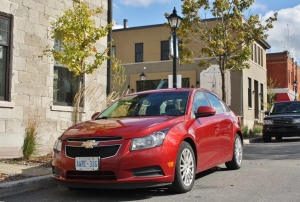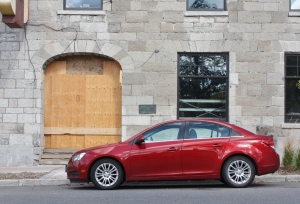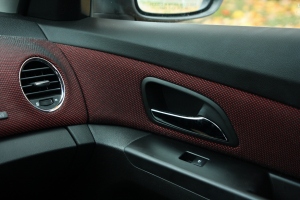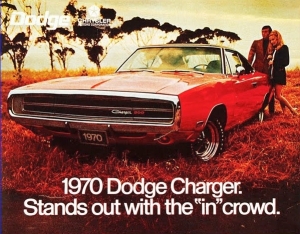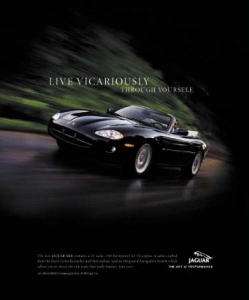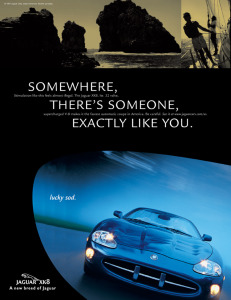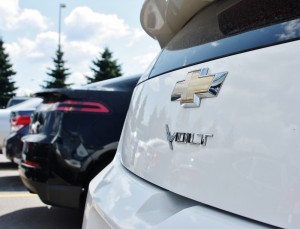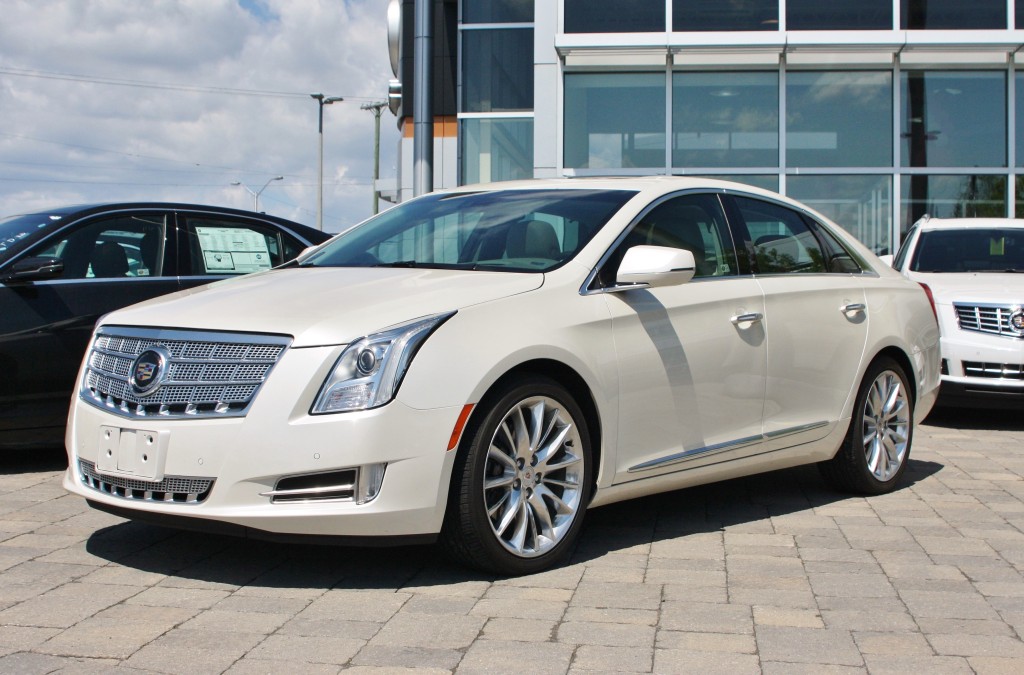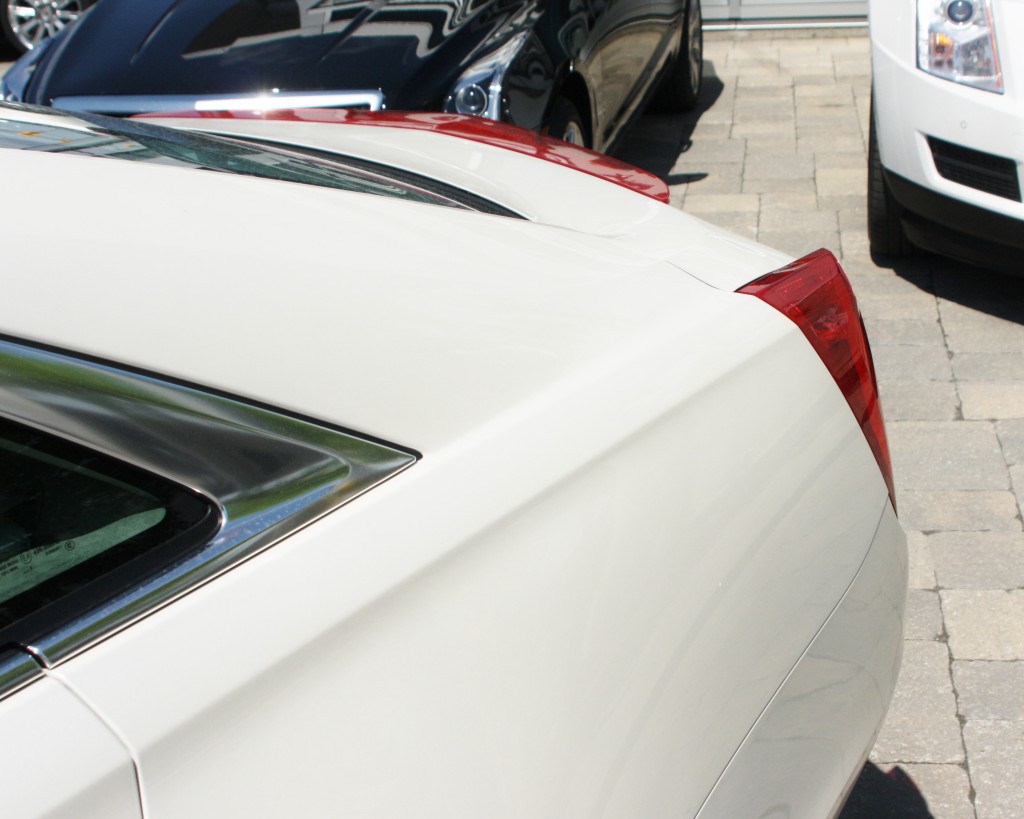A long-term look at Chevy’s global compact
It’s been four years since Chevrolet began erasing the sins of the past with the help of its compact Cruze sedan.
In the fall of 2010, a freshly bailed out GM sprung a new model into the marketplace designed to compete, rather than just show up for participation marks. The Cruze rolled out with a splashy advertising campaign crafted by nervous executives and their secretly terrified underlings, designed to make people forget about the blandmobile that preceded it (and the one that came before that).
Offered strictly as a four-door sedan positioned on the large side of the compact spectrum, the Cruze was engineered to be everything the Cobalt and Cavalier weren’t. More rigidity, more spaciousness, more technology and more miles to the gallon was needed to wage war with the perennially popular Civic and Corolla, as well as lower volume offerings like the Focus, Sentra and Jetta.
Unlike the Chevy Cobalt and Pontiac G5 twins (as well as the Cavalier/Sunfire that came before them), the Cruze was truly a global car, manufactured in four continents and sold in five. Only in Australia was the Chevrolet nameplate shoved aside to make way for a regional GM division name – in this case, the Holden Cruze.
With a ho-hum yet competitive 1.8-litre four-banger serving as a base North American engine, the Cruze raised eyebrows by offering only 6-speed transmissions (both manual and automatic) – a game-changer for the compact field. GM took a risk by offering, as an uplevel powerplant, an engine smaller than that of its base model – a 1.4-litre turbo making the same horsepower (138), but with more torque (148 ft-lbs versus 125).
The cheap gas of the 1990s and 2000’s was by then no more, thanks to the oil spike of mid-2010, but memories of the big engine displacements it fostered were still fresh. A volume engine in a roughly 3,100-pound car that displaced less that a litre-and-a-half was a foreign concept for GM, and America as a whole.
The public would no doubt question it. Would it pull its own weight? Would a driver used to brawny V-6’s be able to tolerate this motorcycle-worthy 1,364cc mill? Was the car as a whole a flimsy piece of junk?
The passage of time told the story. The Cruze sold well as gas prices remained elevated for years amid a struggling economy, while the automotive industry quickly moved in the direction of smaller displacement turbos and transmissions with economy gearing aimed at wringing more MPG’s out of their lineup.
Horsepower sells, but so does gas mileage when money’s in short supply.
First contact
In November of 2011, a younger (but no more idealistic) version of myself wanted to drive one of those new sedans. Not surprisingly, I ended up with a volume LT model as a tester, equipped with the 1.4-litre turbo and automatic.
My review was published in a now-defunct chain of Ottawa-area weekly newspapers.
Going into the Cruze, I recalled driving a base Chevy Cobalt rental in the Rocky Mountains the year before. While the 2.2-litre engine made decent power, its antiquated 4-speed automatic put the ‘S’ in slushbox and made mountainous driving an irritating chore.
The 6-speed in the Cruze didn’t need the accelerator to be floored in order to necessitate a downshift, and the tiny engine pulled with surprising ease. As well, the interior of the Cruze put the never-ending soft-touch plastic of the Cobalt to shame, thanks to its two-tone fabric inserts in the doors and dash.
A tilt/telescopic steering wheel and a 6-way driver’s seat (that travels an incredibly long way rearward) made it easy to get comfortable behind the wheel, even with my 6’4″ frame.
The driving dynamics of the Cruze, from steering to braking and cornering, were substantially improved over the Cobalt. While I didn’t mention it at the time, the design of the Cruze, though cautious, was reasonably attractive and promised a long shelf life.
With the Cruze only just out of the gate at the time, and with GM compacts steeped in negative stigma, I pretty much declared the new model a winner in terms of value and content.
As it turns out, a lot of people chose to hand their money to GM in return for a Cruze. The 3 millionth Cruze rolled off assembly lines in Ohio in August of 2014.
Of those sedans that rolled out of Lordstown over the past four years, one was mine.
2011 Chevy Cruze Eco
The Cruze Eco was Chevy’s ‘Wow – look at those numbers!’ model.
With a triple overdrive 6-speed manual mated to the 1.4-litre engine, in addition to significant weight savings, aerodynamic improvements (including grille shutters that close above 20 km/h), and low rolling resistance tires, the Eco was designed to deliver head-turning mileage numbers.
The high-mileage model was a phenomenon that soon became common place for domestic auto manufacturers. Ford and Dodge soon had theirs in the form of the Fiesta SFE and Dart Aero, respectively.
The highway mileage figure for these cars is great for use in advertisements – you’ll see them preceded by the words ‘up to’.
The Cruze Eco, which seemed to only be sold in the colour red, subtly improved on the appearance of the base LS and volume LT models with chrome-plated 17-inch alloy wheels and a low-profile rear lip spoiler.
Inside, the two-tone upholstery (black and red seems popular!) is complemented by a similar motif on the doors and dashboard. There, the somewhat cheap-looking black plastic is broken up by fabric mesh inserts that are pleasing to the eye and seem durable enough.
The centre stack and console is trimmed in bright silver plastic that won’t fool anyone into thinking it’s aluminum, but makes for a brighter, more engaging interior nonetheless.
With the Cruze now an established presence, deals can easily be found on used and off-lease models. The Eco no longer carries a price premium after three years (it seems), making it a good deal for mileage-conscious shoppers.
Hence why I got into one.
The Drive
I’ve mentioned the comfortable driving position and handling characteristics of the Cruze already (Hey, how ’bout that turning radius?!), so we don’t need to venture into that. For a compact car, backseat space is acceptable, and a 15 cubic foot trunk puts it near the top of its class in terms of cargo volume.
As a past owner of several GM sedans, going back to the early ’90s, I was happy to see that the horrific 1st generation anti-lock braking system had been tossed on the trash heap of history. A ’93 Chevy Corsica and 2003 Pontiac Grand Am came equipped with them, and I loathed every second I spent trying to come to a full and complete stop.
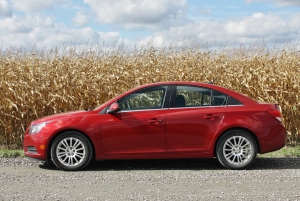
On a 163 km journey from Killaloe, ON to downtown Ottawa, the Cruze Eco managed an average of 66.5 mpg (Imp.), or 4.2 L/100km.
The anti-lock system on the Cruze, which featured rear drums for weight savings, stops far faster and with far less pedal pulsation that the older GMs. On ice and snow the difference is even more noticeable – slick conditions confused those earlier brakes, and both cars had a tendency to give up on slowing down if the surface was slick, even with the brake pedal to the floor).
Traction control keeps the Cruze planted while cornering (at reasonable speeds) on snow and gravel, and can be shut off in order to slog through the deeper drifts.
At low to moderate speeds, the Cruze’s steering is just what you want it to be. Precise and power assisted at low speeds, the steering firms up nicely as speed rises.
On the highway, travelling on straight stretches, I take issue with the need to perform minor, ongoing steering corrections, due to an otherwise firm wheel that offers a little bit of play – play that translates into unwelcome trajectory changes. With your hands off the wheel, the car doesn’t wander, but with a two-hand grip, you’ll find yourself constantly making subtle corrections.
Most of the time these actions are subconscious, but it’s still an issue that should be addressed in the second-generation Cruze.
The triple overdrive gear set on the Eco’s 6-speed manual can take most of the credit for the model’s great highway fuel economy, but it does make around-town driving a little tricky. Don’t think that dropping a gear in any situation (even on the highway) is going to make an appreciable difference in acceleration.
Given the loftiness of those top three gears, dropping two ratios is almost always required to perform your average ‘manoeuvre’. The mileage that comes from that gearbox and all the other fuel-saving gizmos is appreciated, though, especially when you see the price at the pumps.
GM lists the Cruze Eco’s highway fuel economy at 4.6 L/100km, or 61 MPG (Imp.), which is 11 MPG more than the least efficient Cruze model.
On a 163-kilometre drive from the rural Valley town of Killaloe to my driveway in downtown Ottawa, the Cruze Eco managed to average 66.5 MPG, or 4.25 L/100km. The trip was made on secondary highways and a four-lane highway, and I kept to the speed limit (but didn’t drop below).
Driving normally, highway jaunts usually return mileage in the 57-58 MPG range.
The Cruze was a big step up in late 2010 and it’s still a capable, competitive vehicle. I’ll be interested to see the specs on the second generation model, which comes out next year as a 1016 model.
